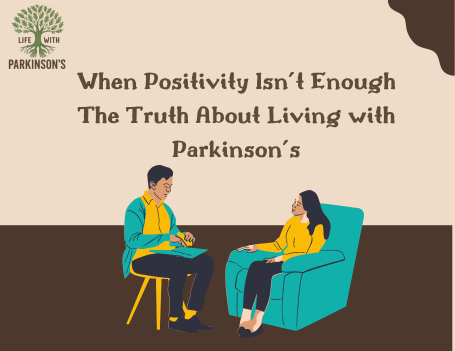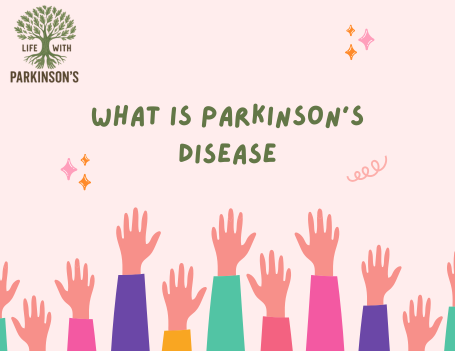There’s a quote: “Let food be thy medicine, and medicine be thy food.” — Hippocrates
It sounds simple, but it’s led me to reshape how I think about every bite I eat. If you’re wondering what’s changed for me lately, the answer lies in how I eat, what I eat, and most importantly — why I eat that way.
This post is an overview of the diet plan I’ve built, based purely on personal experience, trial, error, and paying close attention to how my body responds. It’s not medical advice or a one-size-fits-all program. But it’s what has helped me. And if you’re living with Parkinson’s, or supporting someone who is, maybe it will help you too.
Rethinking Food: Why When I Eat Matters Most
Let’s start with what I believe is the most misunderstood part of a Parkinson’s diet. Most people focus on what to eat. But in my experience, that’s only half the equation. The other half — and maybe the more important half — is when you eat.
That’s what I had to completely rebuild my relationship with. My day now runs on a rhythm that’s centered around giving food and medication their space — and not letting one interfere with the other.
My Parkinson’s Diet – What You Need to Know
The routine is tight. I take medication every three hours. For those meds to do their job properly, I need to:
- Give them one hour after taking before eating anything, and
- Wait two hours after eating before the next dose
That cycle doesn’t leave a lot of wiggle room — but it’s enough. Just enough. And when I respect those windows, things go more smoothly.
I’ve tried popular diet trends like keto, Mediterranean, MIND, and carnivore. Some had appeal. But in the end, they all fell short for one key reason: they didn’t allow enough digestion time. Every time I found myself with food still lingering when my next dose was due, I paid the price.
This isn’t about starving yourself or cutting entire categories of food. It’s about timing and efficiency. Giving food space. Giving meds their turn. Respecting the cycle.
Protein: Friend, Not Foe (If Handled Right)
Now here’s the part that took me a while to get right: protein.
It’s tempting to just cut back on protein completely, thinking that if it competes with medication, we should avoid it. That’s a mistake. What’s really needed is placement, not elimination.
I follow a simple ratio: 0.8 grams of protein per kilogram of body weight per day. For me, that comes out to around 80 grams daily. I aim to hit that target, but carefully. If I go under, I feel it — fatigue, weakness, just general low energy. Protein matters. It keeps the tank full.
So yes, I protect my protein — but I don’t fear it. It gets a spot in my schedule, and it earns that spot by being essential to how I function.
My Unexciting but Purposeful Plate
Let me be honest with you: my meals are not flashy. They won’t win any Instagram contests. There’s no bacon-wrapped anything or cheat-day desserts. But every item on my plate serves a role.
This section is where I walk you through the foods that have become my go-tos. Again, this wasn’t built in a lab or suggested by some influencer — this is what my body has responded well to.
My Foundation Foods:
- Fresh fruits and vegetables
- Gluten-free grains and ingredients
- Sugar-free, unprocessed items
- Non-dairy options like fortified almond milk
- Nuts, berries, peanut butter
- Green leafy vegetables
- Coconut oil for cooking
- Herbal teas, hydrogen water
That’s the core. Day in and day out. Everything is aimed at keeping inflammation low and energy high.
Is it boring? Sometimes. But the alternative — feeling wiped out, unstable, or unwell — is far worse.
I’ve also made a full switch to organic where I can. That means fewer pesticides and fewer things that don’t belong in my system. I get a weekly organic delivery, and I build meals from that supply. It’s become routine.
The idea is simple: make every bite count, and never eat something that works against your goals. If I stray from that rule, I feel the consequences fast — often ending up on my back, totally drained. So the motivation to stay on track is pretty strong.
Even hydration has a role. I don’t just drink water for thirst. I use it as a way to introduce antioxidants, support energy, and stay balanced. Every glass matters.
A New Direction: Discovering Farnesol
This next part of my diet journey started with a headline I couldn’t ignore. A 2021 study from Johns Hopkins Medicine highlighted a natural compound called farnesol — something found in fruits, herbs, and even certain vegetables. In that study, researchers showed that farnesol prevented and even reversed brain damage in mice related to Parkinson’s.
That caught my attention.
The way it works is by deactivating a protein known as PARIS — a key player in the progression of the disease. When PARIS is blocked, dopamine-producing neurons seem to be protected. And that has major implications for how we approach managing Parkinson’s.
So I dug in. Farnesol isn’t some pharmaceutical breakthrough (yet). It’s actually a natural compound already used in things like perfume and flavorings. But its potential goes way beyond the cosmetic.
So what did I do?
I started looking for foods rich in farnesol — and I built them into my meals.
Foods I Added for Farnesol:
- Berries
- Stone fruits
- Lemongrass
- Citronella
- Chamomile
- Tomatoes
- Corn
- Thyme
- Musk (though not easy to add to a grocery list)
There’s no dosing guideline for farnesol right now — we just don’t know how much enough, or how it scales from mouse studies to people is. But that’s not new to me. It’s the same story I’ve seen play out with glutathione, NAC, and other promising compounds: exciting results, followed by silence.
Why? Because often, large-scale research stalls when it doesn’t offer a commercial payoff.
And that’s why personal initiative matters.
I’m not waiting for a pharmaceutical company to tell me what to try. If something shows promise, and it’s safe, I’m willing to explore it.
Since building more farnesol-containing foods into my meals, I’ve felt a positive shift.
Nothing dramatic. But better. More stable. More alert. That’s worth paying attention to.
Personal Dedication: The Real Ingredient behind All of This
All of this — the timing, the meal choices, the reading, the adjusting — it takes effort. Real effort. And if I’m being honest, it requires more than just a good plan. It takes commitment.
I didn’t get here overnight. And I’m still refining things.
But I can tell you with full confidence: this works for me.
And that’s the point. Not to preach a miracle diet or pretend to have all the answers. Just to share what I’ve learned, what’s helped, and what might give you or someone you care about a better day — or a better week.
Caregiver’s Note
To the caregivers out there reading this — I see you. And I thank you.
Behind every person trying to stick to a plan like this, there’s often someone helping from the sidelines. Whether you’re prepping meals, tracking timing, or just offering encouragement — it matters more than you know.
This kind of diet isn’t always intuitive. It doesn’t follow standard routines. But having someone who understands the why behind it can make all the difference.
So from me to you — thank you.
Support My Work on Ko-fi
If my journey and this information have helped you in any way, consider buying me a coffee on Ko-fi. Sharing this experience publicly takes energy, time, and a lot of trial and error—and your support helps me keep showing up for the community.
Sources & Resources
- Farnesol: from perfume to Parkinson’s – Cure Parkinson’s
- Fruit Compound May Have Potential to Prevent and Treat Parkinson’s Disease – ScienceDaily
- Johns Hopkins Medicine – Farnesol and Parkinson’s
- How Long Does It Take to Digest Food?
- What is Organic? – Canada Organic Trade Association
- Waiting for PARIS— A Biological Target in Search of a Drug – IOS Press



